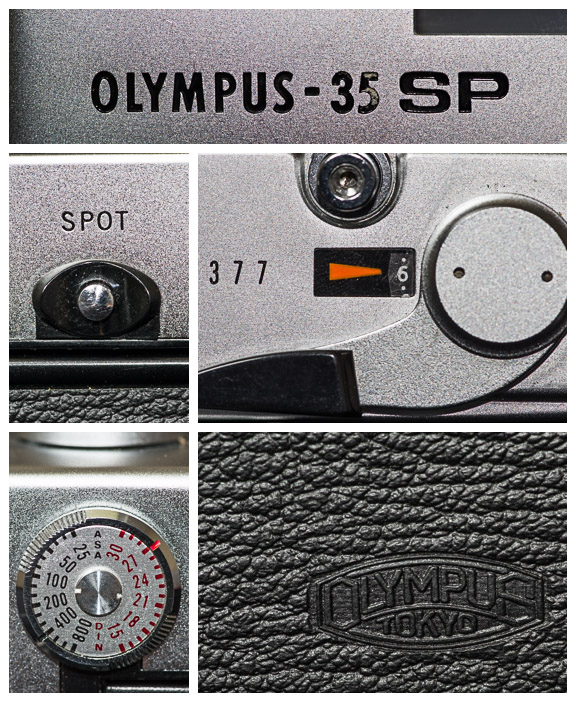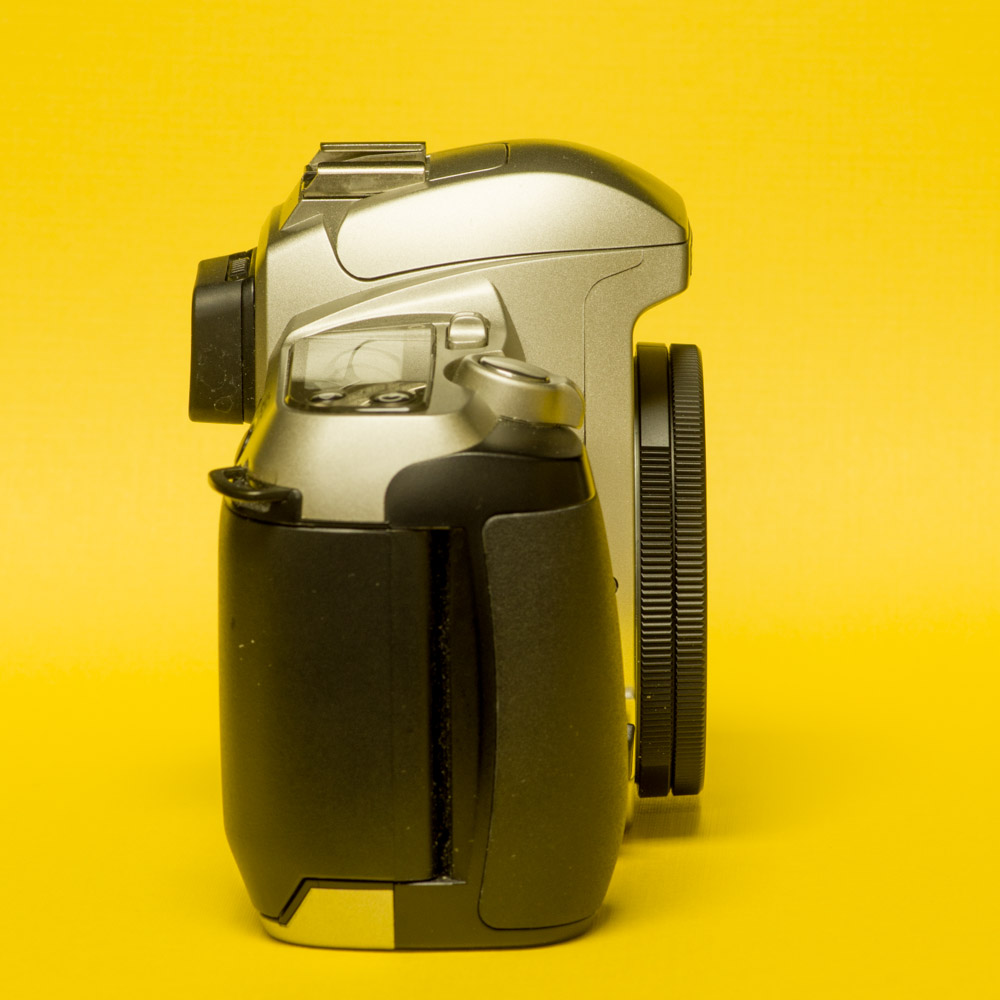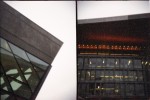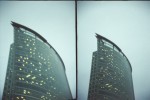Feb
15
2015

One of the reasons to like this camera is that while it has automatic exposure it is still manual rangefinder focusing. That appeals to me, in fact the first camera I bought for myself was the Minolta X700 a manual focus SLR at a time when autofocus cameras were everywhere. In some cases I don’t mind turning certain aspects of making pictures over to the camera when I know how its going to behave anyway, but letting the camera choose what is in focus seems to be giving up too much. Even today I mostly use spot focus with my DSLR and recompose.
Back to the Canon A35F which looks a lot like a Canonet or a QL17 with a built in flash. One downside of this automatic camera is that it will lock the shutter if the light level falls too low, I would rather have an underexposed image than no image at all. This happens at EV9 with 100 ISO film (1/60 @ f2.8) a place I often go photographically, so that does limit its usefulness. You can always turn on the flash I suppose and go for that 1980’s party flash look. Speaking of looks I like the all black of the camera, so many of the other rangefinders I have seen from this time have the silver black two tone look, making the A35F actually stands out. It looks better than the Canon AF35 that came out the next year as well. So it sits between these two designs



Bring on the pictures!
no comments
Feb
11
2015

Lets see…good film (check) great camera (check) interesting place (check) it all adds up to a great time taking pictures. I helped chaperone a group of highschool photography students downtown Vancouver and true to form I had a couple different cameras with me. One of them was the Yashica Electro GX only recently knocked from its pedestal of favourite rangefinder in my collection by the equally good Olympus SP35
I really like the look I get from Portra 800 as well and am amazed at how fine the grain is considering the speed of the film. Here is a crop from one of the images.

More about the Yashica GX through searching my blog here Yashica Electro 35 GX
1 comment | posted in Cameras, Photography, Uncategorized
Jan
24
2015

One of the problems with using old cameras for the first time is that you never know if they are fully functional until later when you get the negatives back. Such is the case with my Yashica Minister D. I knew that there was something up with the focus because the rangefinder did not match the lens distance markings. I decided the safe bet was to use the markings on the lens and not the rangefinder which seemed so out of whack with what I knew the distances to be. Well it turns out that the lens markings were equally wrong or the lens itself has been damaged in some way I will need to have a closer look. In this shot I’m pretty sure that I had focused near infinity and had used a small aparature which should have resulted in everything in the scene being in focus so it seems likely that it is the lens itself. It shall go into ‘the pile’

Some more images that didn’t turn out
3 comments
Dec
24
2014

The Olympus SP35 Rangefinder has a fantastic 7 element lens of 42mm and can be used in either automatic exposure or fully manual. additionally it has the unique ability to spot meter when you press the ‘Spot’ button. The meter gives its readings in EV rather than shutter speed and aperture but its easy to convert that into a useful setting of the camera as the EV value for the ISO/Shutter/Aperture combination is displayed in a small window on the lens barrel. As long as the combination you select results in the same EV value as what the meter indicates you will get a correct exposure (Of course you may want to deviate from that). When you want to meter for something specific such as a face that is back-lit you can use the spot meter button to determine the correct exposure for the spot (the same area as the focus patch). You would then just let the background be over exposed as a compromise.
At 600 grams it isn’t a dainty camera but it is finely made with all quality parts and materials. The f1.7 lens is no lightweight either adding its share to the heft. More post about this camera can be found here The Swap Olympus SP35
I would have to say the Olympus Sp35 has a very sharp distortion free lens from center to corners in the same league as the Canon QL17 and Yashica GX
One thing about one camera: The lens is a 42mm 1:1.7 Zuiko and the letter G denotes that it has 7 elements as G is the seventh letter in the alphabet. So if you see a Zuiko D it has 4 elements ect.
2 comments | posted in Cameras, Photography, Uncategorized
Nov
26
2014

The full-sized SLR lens is just there to give some scale for the Q7 and the 02 zoom lens. There may be some overlap with my film shots mostly because I use my Q7 as a lightmeter as well as a camera. These pictures are just some fun snaps of signs from a trip earlier this year. For many things the Q7 is perfectly adequite as a photography tool and there is no denying it’s diminutive nature can be a real advantage both in size and inconspicuousness.
no comments | posted in Cameras, Photography, Uncategorized
Nov
24
2014
That means there are only 14 possible chances at Polaroid Spectra awesomeness and if the poor distribution of the chemicals in this one is any indication the time is running out on these.

no comments
Sep
10
2014


I didn’t end up finishing the roll of film in my Ricoh R1 so it did go through the security check at the airport and seems to have survived none the worse for all the radiation. As I’ve said before the Ricoh R1 has an incredibly sharp lens particularly in the center when set to 30mm not the 24mm wide angle seen in the picture above. It’s also small and pocketable. As it is one of the direct forerunners of the latest Ricoh GR digital camera its making me take a serious look at that camera too. We have reached a point in digital photography where there are many great cameras to choose from with each one having certain advantages that set them apart but they are for the most part all yielding quality images. So what would be the reason to use the R1 with film over buying a Ricoh GR? Well at around $800 for the GR that works out to around 80 rolls of film developed or 2880 frames so clearly in the long run digital would be an advantage but I’m not really likely to want to use this camera exclusively and 2880 frames might take me 5 years to shoot in that manner. You can see my dilemma, wanting something and needing it are two different things entirely.
no comments | tags: film, Photography, Ricoh | posted in Cameras, Photography, Uncategorized
Sep
5
2014


The Pentax smc PENTAX-DA 40mm F2.8 XS Lens is an impossibly thin pancake lens that was originally designed to go with the digital APS-c Pentax K-01 but as some people have noted it also covers a full 35mm film frame. I needed to find out for myself so I mounted it to my Pentax MZ-6 a camera that I had given away but received back and am very happy about that. I had really under rated the camera, while not built to take a beating like a professional camera, it has all the functionality of one. Back to the lens though. While the lens is very thin it shouldn’t be all that surprising as many 35mm film point and shoot cameras have similar sized lenses that are often even closer to the film plane. As a lens used with 35mm film I can say that it does an excellent job with very little vignetting which is the one thing you might expect to see when using an APS-c lens. The fact that it takes up next to no room in a camera bag and that it can be used on both film and digital really makes this a must carry lens for me.
2 comments | tags: film, lens, Pentax | posted in Cameras, Photography, Uncategorized
May
22
2014

The Holga TIM is an interesting camera that lends itself to photographic experimentation. With its two lenses that can be covered and uncovered independently and the fact that the shutter can be reset without advancing the film it allows you to shoot two images side by side within the space of a regular 35mm film frame. You can also do multiple exposures on a single frame using the shutter reset. For these images though I would expose one lens at a time and then reset the shutter and exchange which lens was uncovered, producing diptychs on film.
2 comments | tags: film, holga | posted in Cameras, Photography, Uncategorized
























































































































